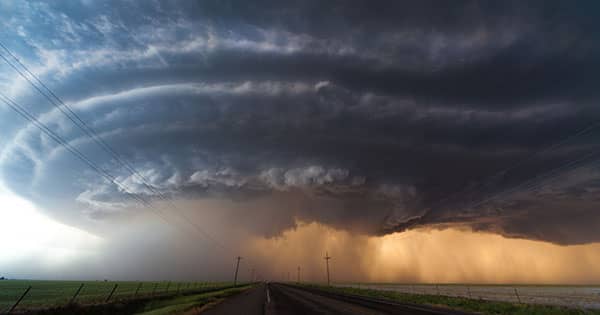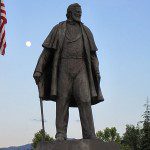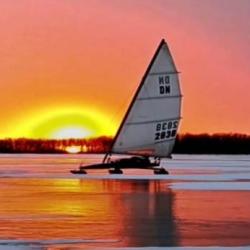 |
| Minerva Studio / Shutterstock.com |
Note: This is the sixth of a nine-part series of personal vignettes that explore the challenges of the human journey from cradle to grave. Start at the beginning here.
My fascination with extreme weather predates the movie Twister by almost three decades. But it was that Hollywood film that brought storm chasers into the view of popular culture for the first time. How did the movie portray them? As scientists and nerds, eccentrics and thrill seekers. Who, other than an outlier or a madman, would want to aggressively pursue unpredictable forces of nature that can, within seconds, literally wipe an entire town off the face of the earth?
I had always wanted to experience a tornado firsthand, to see, hear, and feel a meteorological event that was as perilous as it was enthralling. As a child growing up in the Midwest, I'd witnessed the power of many severe thunderstorms, and I had to take shelter in our basement on numerous occasions in response to tornado warnings. I had terrifying nightmares about tornadoes pursuing me. Still, I was enthralled by them. When I was older, I grew more curious about how tornadoes formed and functioned; I wanted to try to understand the inner dynamics, not just observe the awe-inspiring, external effects, of these wild and inscrutable monsters of the sky.
When I had the opportunity to write a magazine piece on a professional storm chaser from Texas, I jumped at the chance. I met Stephen Levine at his residence just outside of Dallas. The walls in his apartment were filled with photographs of dramatic lightning, interesting cloud formations, and tornadoes; bags were half-packed and ready for a road trip; on his computer screen was a page from the Storm Prediction Center (in Norman, Oklahoma) showing a map of the United States and highlighting potential regions for severe weather over the next several days. We spent the evening loading up his van with supplies we needed for the trip, which would last about a week.
I followed Stephen in a rental car and we communicated with CBs. As we drove north past the town of Moore, Oklahoma, I slowed down and gazed out the windows of my vehicle. The area looked like a war zone. A month before, a devastating F-5 tornado (the most powerful and violent level of intensity on the Fujita scale) had crossed the highway at exactly this spot and then went on to tear through the Oklahoma City suburb. Scores of people were killed and entire neighborhoods were obliterated. The damage path was still visible. A former motel was now a mass of twisted steel and shattered concrete. I felt ambivalent about what we were doing. While we were actively seeking twisters, this community had just been destroyed by one. Was I just an amoral joyrider? Was there any goal other than a thrill behind our actions?
Our initial targets were supercells, compact, high energy thunderstorms that can develop from a towering cumulus cloud and explode 60,000 feet or more into the atmosphere in just thirty minutes. They are the most intense of all thunderstorms, producing torrential rains, large hail, winds in excess of 100 miles per hour and, sometimes, tornadoes. The engine that drives these weather systems is the mesocyclone, a two- to six-mile zone of rotation within the supercell that is usually found at the southern edge of the storm. It is beneath this area (known as the "bear's cage" in chaser lingo), emerging from a structure called a wall cloud, that tornadoes can form.
We drove west across the Oklahoma panhandle and then north across the border into Liberal, Kansas, where we spent the first night. The SPC was predicting severe weather over the next few days in western Kansas and Nebraska, an area of hundreds of square miles. The next day, while we stopped at a Dairy Queen in Garden City, Kansas, Stephen pointed to an enormous, flattened sheet of cloud streaking across the sky: "That's an anvil, my friend," he said. "Let's go find us the supercell!" An anvil is made of condensed ice crystals at the tops of storms that are sprayed eastward by the jet stream, and it nearly always indicates a severe thunderstorm at its point of origin.
We drove west alongside the storm for forty or fifty miles. The temperature outside dropped precipitously. Above us, large mammatus clouds protruded from the anvil. All the signs were present for instability in the atmosphere. As we got closer to the storm's core, horizontal rain began pounding our windshields. Then came strong wind and driving hail. My heart was racing — it felt like I was heading into the belly of a gigantic beast. I could barely see Stephen's van in front of me, and soon I could no longer make out the features of the supercell's cumulonimbus tower. We punched through the shroud of precipitation and hail and, suddenly, entered sunny, clear weather. Just a mile or two from us to our south was the source of this potent energy.




